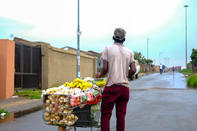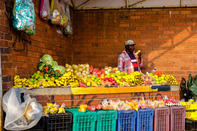Food Deserts
The idea of a ‘food desert’ comes from Europe and the US where, in the 1990s supermarket chains were pulling their stores out of poor inner city neighbourhoods because they weren’t turning enough profit. The result is that people living there couldn’t find wholesome, nutritious, affordable foods that were close to where they lived.

Meanwhile supermarkets, which often have more affordable healthy foods because of their bulk buying capacity and scales of economy, tended to put stores far out in the suburbs, catering for wealthier people who, importantly, had private transport.
This is how the profit-driven nature of the food system in a free market economy can shape the kind of food that’s available to us in different neighbourhoods in the city.
The food deserts in Cape Town, like many South African cities, are different to those in developed world cities. Supermarkets aren’t retreating from poor communities, they’re actually expanding. Dr Jane Battersby and her colleagues at UCT’s African Food Security Urban Network (AFSUN) recently mapped where the Cape Town’s supermarkets are. They found that most of them are in wealthy suburbs, where the highest income areas have nearly ‘eight times as many supermarkets per household as those in the lowest income (areas)’.
Local Street Vendors

When social grants are paid out at, say, a community hall, people often spend it at nearby hawkers, street traders and other vendors. This means local people buying from local people – money comes into the community from the state and remains within the community, circulating and boosting the neighbourhood economy.
Township traders, hawkers and other informal food traders are an important but often invisible and underappreciated part of our resilience against hunger as a city. They may not be able to match supermarkets gram for gram on price, but they can ‘leapfrog’ parts of the formal food system in a way that benefits the poor.
They are often more flexible and responsive to their customers’ needs, than formal retailers: their stores pop up wherever their customers are, which helps families save on the considerable transport costs of having to travel outside of their neighbourhood to buy food.
They aren’t constrained by formal opening and closing times. They absorb a lot of the second- or third-grade produce that is rejected by retailers and would otherwise go to waste. They often allow customers to buy on credit, which helps for low-earning families who might run out of cash at different times of the month.
Street traders are threatened by city policy that doesn’t see their value to the food system, and also by the competition of the supermarket system that might put them out of business.